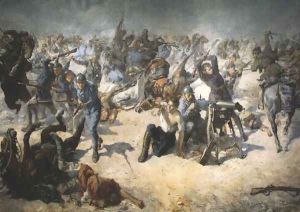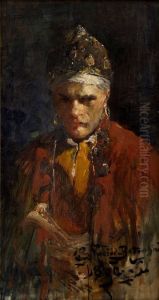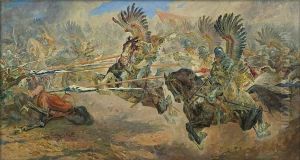Stanislaw Kaczor-Batowski Paintings
Stanisław Kaczor-Batowski was a Polish painter, born in 1866 in Gwoździec, then part of the Austro-Hungarian Empire and now located in Ukraine. He emerged as a significant figure in the realm of Polish art, particularly known for his landscapes, genre scenes, and historical paintings. His artistic journey led him to study at the Academy of Fine Arts in Kraków, a prestigious institution that played a critical role in shaping his early artistic development. There, he was under the tutelage of renowned artists like Jan Matejko, whose influence is evident in Kaczor-Batowski's historical compositions.
After completing his education in Kraków, Kaczor-Batowski expanded his artistic horizon by traveling and studying across Europe, with significant periods in Munich and Paris. These experiences exposed him to various art movements and styles, notably Impressionism, which subtly influenced his work. His paintings began to exemplify a unique blend of traditional Polish themes with the broader, more universal trends in European art of the time. Kaczor-Batowski was particularly adept at capturing the essence of the Polish landscape and the everyday lives of its people, often imbued with a nationalistic spirit that was characteristic of Polish art in the period leading up to and following Poland's regaining of independence in 1918.
Throughout his career, Kaczor-Batowski exhibited widely, both within Poland and internationally, gaining recognition and accolades for his contributions to Polish art. He was deeply involved in the artistic community, participating in numerous organizations and advocating for the promotion of Polish art and artists. Despite the challenges posed by the two World Wars and the changing political landscape of Europe during his lifetime, Kaczor-Batowski remained committed to his artistic vision, leaving behind a rich legacy of paintings that continue to be celebrated for their beauty, technical skill, and cultural significance. He passed away in 1946 in Lviv, leaving a lasting impact on the generations of Polish artists that followed.


